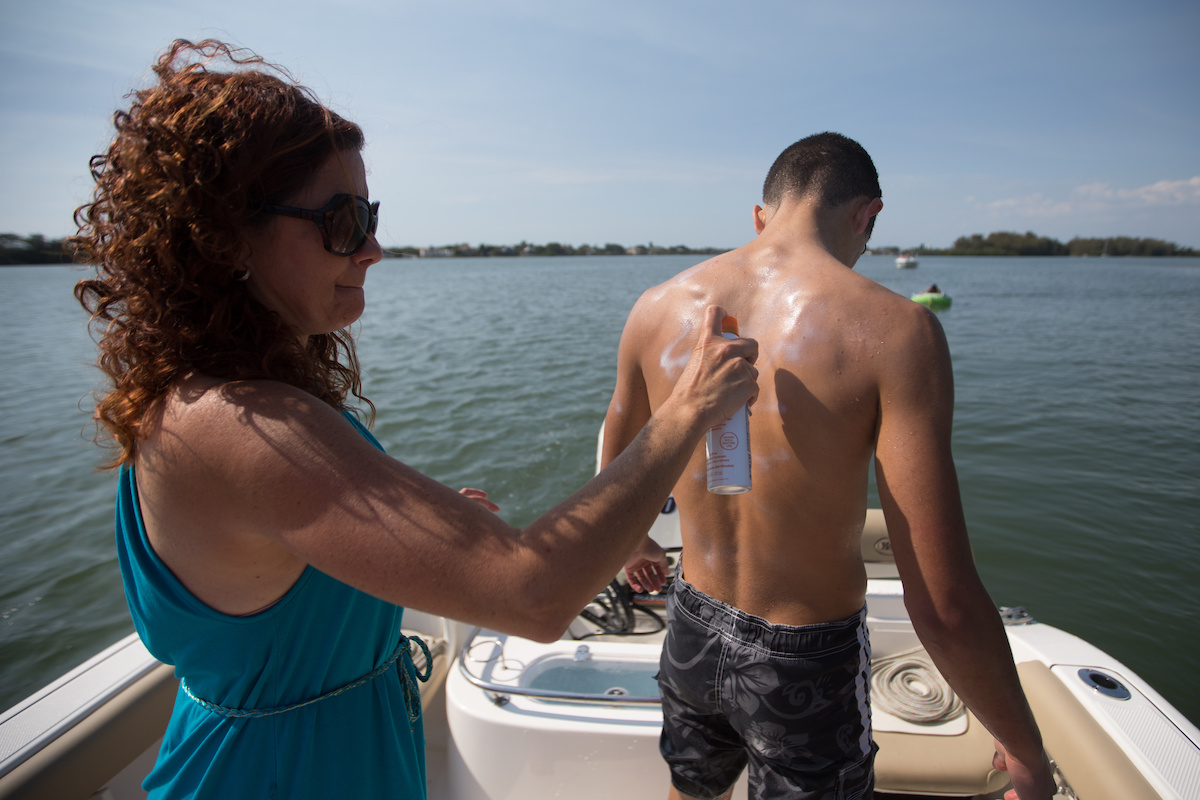Taking the boat out on a hot day under the sun can be one of the highlights of summer boating - but it can also be a health concern. As summer days get hotter, a few practical warm-weather boating tips can come in handy.
Before You Hit the Water
1. Check the Weather
Before heading out, always check the weather forecast. Hot weather can amplify the risks associated with boating. Understanding the expected temperatures and conditions helps you prepare adequately.
2. Plan Your Trip
Timing your boating trips to avoid the peak heat of the day is a foundational hot-weather boating tip. Early mornings and late afternoons are generally cooler, providing a more comfortable environment. Aim to be on the water from 4 a.m. to 7 a.m. or after 4 p.m., when the sun's intensity is lower.
3. Pack Adequate Supplies
Packing plenty of water and electrolyte drinks will keep everyone on board hydrated. Alcohol and caffeinated beverages can dehydrate you, so it's best to avoid them.
To help keep your body temperature down, pack a cooler with ice packs, cold drinks, and frozen snacks like ice pops.
Avoid heavy meals that make you feel sluggish and increase your body temperature. Pack lighter meals that are easier to digest, like salads, dips, fruits, and vegetables. This can help keep your energy levels stable and your body cool.
Read Next: How to Plan a Boat Picnic
4. Prioritize Sun Protection
Use Sunscreen and reapply every two hours, especially after swimming or sweating. A sports sunscreen that is waterproof and sweat-proof offers the best protection.
Wearing the right clothing can also make a significant difference. Opt for lightweight, light-colored, and moisture-wicking fabrics to help manage sweat and heat. A wide-brimmed hat and UV-protective sunglasses are essential accessories to protect your skin and eyes from harmful UV rays.
Read Next: The Best Boating Hats
On The Water
1. Create Shade
Exposure to direct sunlight can quickly lead to overheating. To create shaded areas on your boat, use a Bimini top, canopy, or even a large umbrella. Taking breaks in the shade can help prevent heat-related illnesses.
2. Use Cooling Devices
Investing in portable, battery-operated fans or misting systems can provide much-needed relief from the heat. Cooling towels or vests are also effective in keeping your body temperature regulated.
Even splashing water on the deck or using a wind funnel to direct air into the cabin can help keep the environment cool.
3. Stay Hydrated
Consistently drink that water you packed throughout your trip. Even if you don't feel thirsty, it's vital to replenish the fluids lost through sweat.
Ensure everyone on board, including pets, can access fresh, cool water. Hydration is vital to preventing heat exhaustion and heat stroke.
4. Take Dips in the Water
Frequent dips in the water can be incredibly refreshing and help lower your body temperature. This not only keeps you cool but also adds an element of fun to your boating experience.
Read Next: How to Swim Safely Near a Boat
5. Wet Clothes and Cold Packs
Wetting your clothes or hat can provide an instant cooling effect. Additionally, storing ice packs in a cooler and applying them to pulse points (like your wrists and neck) can help reduce your body temperature. These simple methods can make all the difference on sweltering days.
6. Monitor Health
Schedule regular breaks to rest and hydrate. During these breaks, check in with everyone on board to confirm they're feeling well and staying cool.
Educate everyone on board about the signs of heat exhaustion and heat stroke, especially in older adults and young children, and what to do if they or someone else starts showing symptoms.
Symptoms of Heat Exhaustion:
- Heavy Sweating
- Weakness or Fatigue
- Dizziness or Fainting
- Nausea or Vomiting
- Cool, Moist Skin
- Muscle Cramps
- Headache
- Rapid Pulse
Heat stroke is a life-threatening medical emergency. If someone shows signs of heat stroke, seek medical attention immediately and try to cool them down with any means available.
Symptoms of Heat Stroke:
- High Body Temperature: A core body temperature above 103°F (39.4°C).
- Altered Mental State or Behavior
- Hot, Dry Skin
- Rapid and Strong Pulse
- Nausea and Vomiting
- Flushed Skin
- Throbbing Headache
Recognizing and responding promptly to the signs of heat exhaustion and heat stroke can make all the difference between a safe, enjoyable boating experience and a potentially life-threatening situation. Always prioritize safety and take preventive measures to protect yourself and others from the dangers of extreme heat.
Additional Summer Boating Precautions
- Protect Your Boat: Always keep your boat well-maintained, and consider using a floating boat lift to protect it from prolonged sun exposure. This can help preserve its condition and performance over time.
- Keep the Air Circulating: Good ventilation is crucial in hot weather. Open windows and hatches to create a cross-breeze if possible.
- Keep Electronics Cool: Keep electronics in shaded areas and out of direct sunlight. Using fans to circulate air around electronic components can also help prevent overheating.
- Buddy System: Never go boating alone in extreme heat. Having a buddy means someone can help in emergencies like heat stroke or dehydration.
Hot Weather Boating Tips
Boating in hot weather can be a wonderful experience if done safely. By following these tips, you can enjoy your time on the water while staying cool, hydrated, and protected from the sun.
Preparation and awareness are key to a great boating trip so you and your loved ones can enjoy the summer sun safely.


